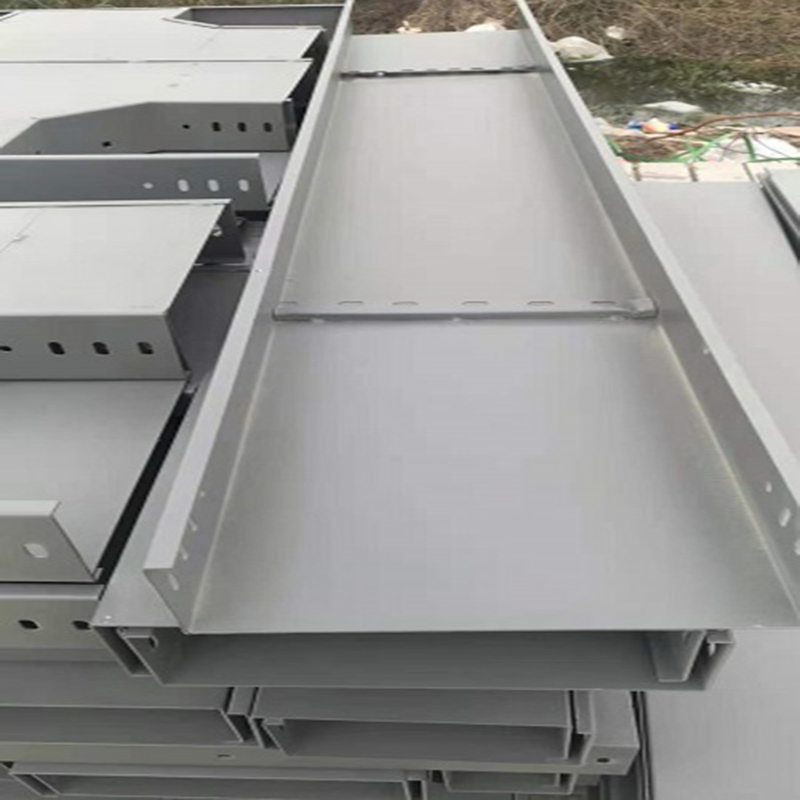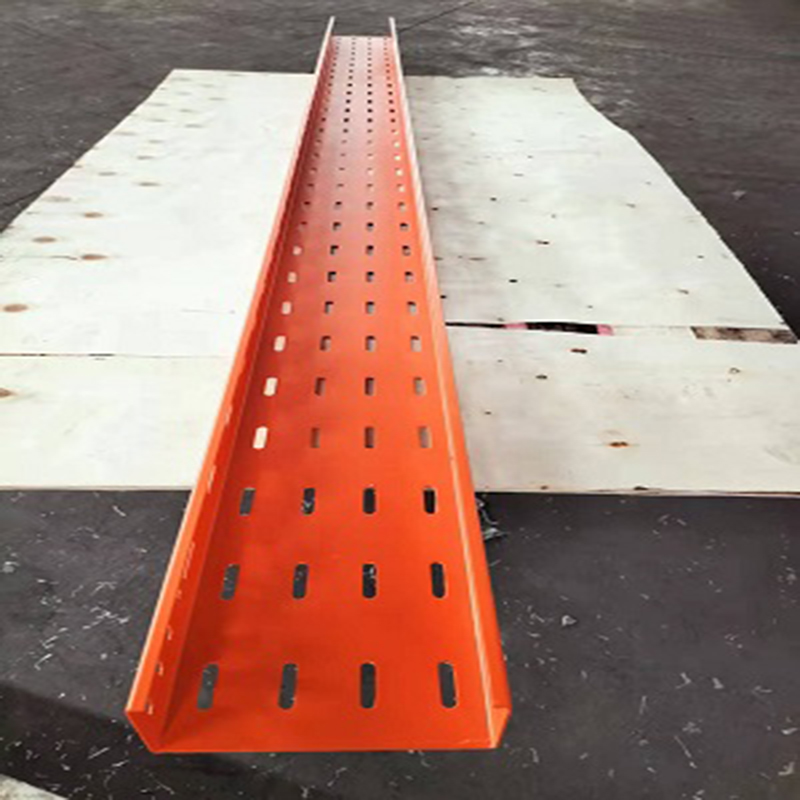What is the difference between perforated cable tray and trough cable tray
Cable trays are ubiquitous in our life, they appear in shopping centers, underground parking lots and factories. It can be said that the existence of the cable channel can protect us from using electricity more safely, and can also protect the cable line from external damage. It can be said that the cable trunking is the best choice of protection for us and the cable. Now let’s take a look at the relevant information about the difference between perforated cable tray and trough type cable tray.
1. Different applications
Solid cable tray: suitable for laying computer cables, communication cables, thermocouple cables and other high sensitivity control cable systems.
Slotted cable tray: It is widely used in petroleum, chemical industry, light industry, television, telecommunications and other fields.
2. Different advantages
Cable channel: it has good effect on controlling cable shielding interference and protecting cable in strong corrosive environment.
Ventilation cable tray: It has the advantages of light weight, large load, beautiful appearance, simple structure, convenient installation, etc. It is applicable to the installation of power cables and the laying of control cables
3. Different varieties available
(1) Composite anti-corrosion shielded cable trough (with cover) shall be selected if it is required to shield the cable network from electrical interference or to protect it from external influences (such as static corrosive liquid, flammable dust and other environments).
(2) (F) composite epoxy resin anti-corrosion and flame retardant cable tray shall be used under strong corrosion environment. The same materials shall be used for support arm, support trough and support to improve the service life of cable trough and accessories. Cover plates shall be added for cable trough where dust is easily accumulated and other places that need to cover the environment or outdoors.
(3) In addition to the above, perforated type, trough type, ladder type, glass anti-corrosion and flame retardant cable tray or steel ordinary cable tray can also be selected according to the site environment and technical requirements. Enclosures shall be added in the environment or outdoor places where dust is easy to accumulate.
(4) In public passages or outdoor crossing sections, the bottom of the bottom ladder shall be added to the mat or the pallet of the section shall be used. When crossing large-span public channels, the bridge bearing capacity can be increased or wire frame can be selected according to user requirements.
When the trough type cable tray is laid horizontally with the heat pipe without insulation, the parallel distance shall be at least 1000mm, the minimum distance when the cable tray is laid crosswise shall be 500mm, the minimum distance when the trough type cable tray is laid crosswise with the heat pipe with insulation measures shall be 300mm, and the minimum distance when the cable tray is laid horizontally shall be 500mm. When the trough type cable tray is installed indoors, the short span of the tray supports and hangers is generally 1.5m~2m, and the long span can be 3m, 4m or 6m. When the trough type cable tray is installed outdoors, the spacing of outdoor columns is generally 6m.
(1) The cable shell, cable tray and its supports and hangers used in corrosive environment shall be made of corrosion-resistant rigid materials or treated with anti-corrosion treatment, which shall meet the requirements of engineering environment and durability.
(2) In the section of cable tray with fire protection requirements, the cable ladder, tray board with fire resistance or flame retardant, network and other materials can be added to form a closed or semi closed structure, and measures shall be taken. For example, the surface of the tray and its supports and hangers shall be coated with fire retardant coating, and the overall fire resistance shall meet the requirements of relevant national codes or standards.
(3) Aluminum cable tray shall not be used in places with high fire protection requirements.
(4) The selection of the width and height of cable ladder and bridge shall meet the requirements of filling rate, cable ladder and bridge filling rate. Generally, the power cable can be 40% to 50%, and the control cable can be 50% to 70%, and 10% to 25% of the project development allowance shall be properly reserved.
The common surface anti-corrosion technologies of ventilation type cable tray include pre coated color steel, VCI bi-metal coating, hot dip galvanizing, powder spraying and electron galvanizing. The last two are suitable for the protection of tray type cable tray in indoor and outdoor ordinary and moderately corrosive environments. Yellow green wire or copper braided wire shall be used at the connection of two tray type cable trays or at the movable connecting plate to connect both ends. The cross-sectional area of the connecting wire shall not be less than 16 mm2. The steel tray type cable tray shall be connected with the nearest general equipotential grounding device when entering and exiting the building.
https://www.qinkai-systems.com/
Post time: Jan-05-2023


